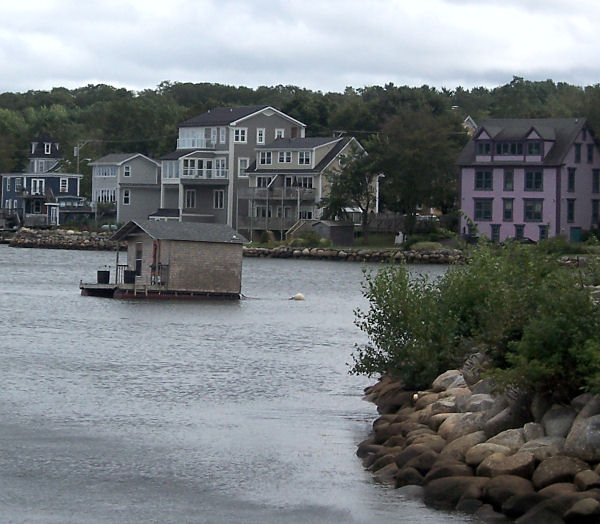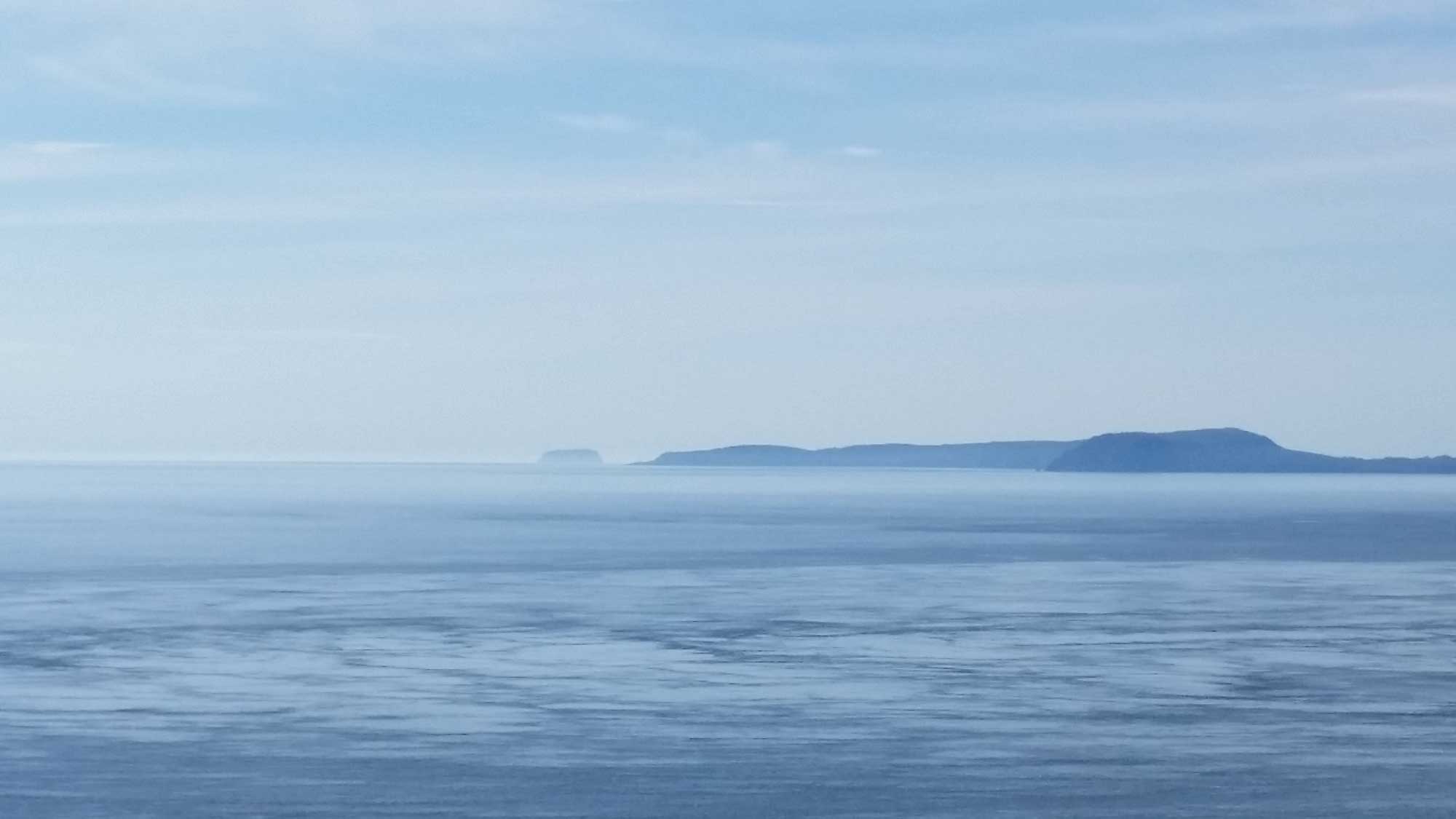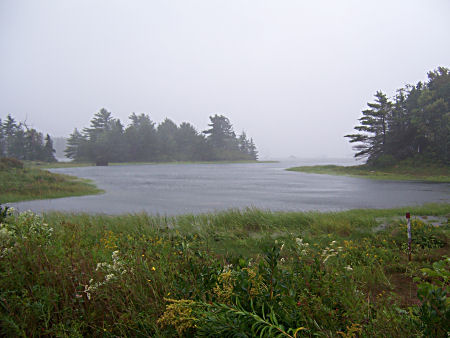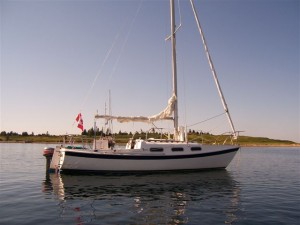
Many people were without power for a day or two due to trees and branches falling on power lines.




Life in Nova Scotia

Many people were without power for a day or two due to trees and branches falling on power lines.



Around noon, it brightened up, the wind died down and then shifted, and blue sky started to move in. We weren’t expecting a well-defined eye, but when we saw blue sky, we got excited.
Was it really the eye? Perhaps it was just the sky just clearing after the brunt of the rain had passed, because according to the storm’s dynamics, most of the rain was ahead of the eye.
In any case, it was a nice moment.
http://www.youtube.com/watch?v=yvZ_4k5l_Cs
At 11 a.m., as the hurricane approaches, the powerful southeasterly wind is pushing water into the bay, causing a storm surge. We’re lucky that the tide is low. Otherwise, some coastal areas would be flooded and there would be damage to infrastructure.
At Western Shore, surf’s up! This is usually a quiet and peaceful place, sheltered from the prevailing winds. But not today; the wind is coming right into Mahone Bay bringing the ocean with it.

We woke early to the sound of the wind, and the news that Hurricane Earl is tracking more easterly than predicted last night, and should pass us directly overhead. Right now it is just south of Yarmouth and has not made landfall yet.
Environment Canada calls it a marginal category 1 hurricane, though some other sources have downgraded it to a tropical storm.

The rain comes in waves.
I have fantasies of being able to photograph the eye if it passes overhead, but may not get blue sky behind. The satellite image doesn’t show a clear hole in the middle.

It’s a bit surreal preparing for a hurricane. If it weren’t for the weather forecasters and mass media, we’d have no idea that anything was coming. We take it on faith that they’re right, and act. We aren’t going camping or sailing this holiday weekend. Instead we’ve battened down the hatches and stocked up on cheese, and we’re waiting it out.
It looks like Earl will have been downgraded to a tropical storm before it hits Nova Scotia. We’re used to that. The colder water around Nova Scotia sucks the juice out of many hurricanes. But tropical storms can still pack quite a punch and cause damage, flood roads and unmoor boats. And occasionally a big one hits, like Hurricane Juan in 2003. So it’s best to be prepared.
It is unusually hot here in this part of Nova Scotia (near Mahone Bay), for early September. Knowing that we’re going to be experiencing the eye of a hurricane before things cool down is not a great comfort, at least not when you own a boat.
Some people are taking their boats out of the water. Nearby, Oak Island Marina is asking boats with the greatest windage to leave the marina before the hurricane passes, whether to a “hurricane hole” such as Chester Back Harbour, or onto the land, to prevent damage to the marina and other boats.

We have a strong mooring and a small, seaworthy sailboat (a Tanzer 22), and we still plan to do lots of sailing this fall. We will remove the sails to reduce windage, remove the outboard engine, secure or remove anything that could cause damage when bouncing around inside the boat, double up the mooring lines including a line from the mooring to the mast, and hope for the best.
If it weren’t so hot, this work would be easier.
Meanwhile, at home we have to be prepared for power outages and high winds, which means taking down the screened-in mosquito shelter, putting tools and toys away, filling the bathtubs and jugs with water, backing up my hard drive, and stocking up on food, batteries and camping gas. As long as the power stays on, I’ll report here on the storm as it passes.